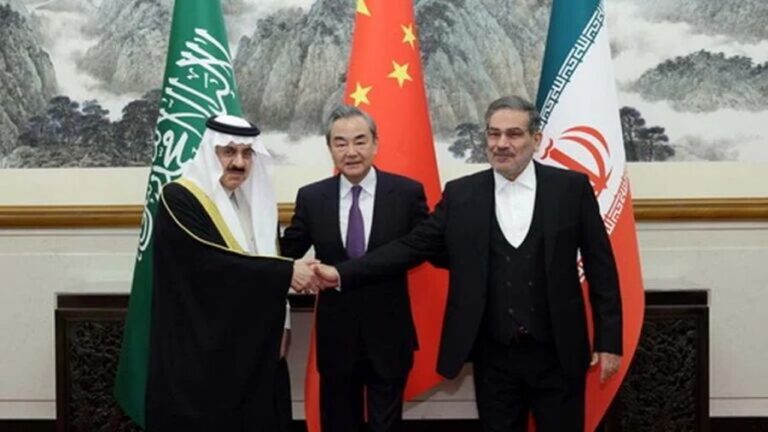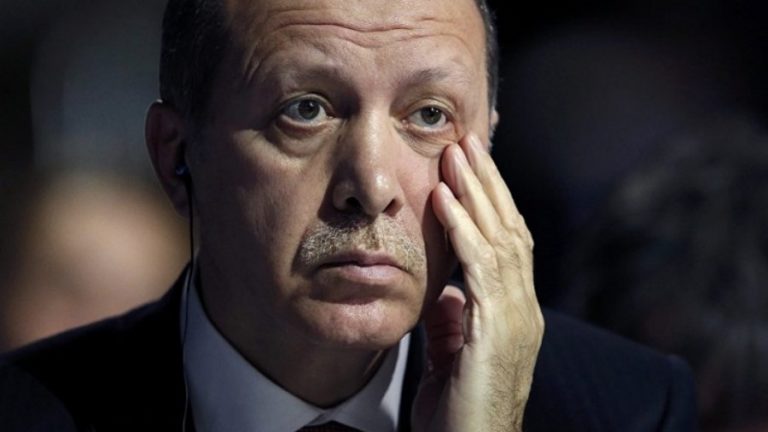‘Chernobyl Moment’ or Chinese Ascendancy?
If a single English-language media outlet failed to use the phrase “Chernobyl moment” to describe China at the February peak of its Covid-19 epidemic, I haven’t found it. For one brief hopeful moment the entirety of the Western punditeska was confident that China’s ascendancy had come to a sorry and sudden end. Now that China has reported no new domestic cases for three consecutive days, it appears that Western Schadenfreude at China’s misery was a form of denial, the first of the late Elizabeth Kübler-Ross’s five stages of grief.
The West has jumped from denial to anger, the second stage in Dr. Kübler-Ross’s list. “I believe [China] could have given us a lot earlier notice,” US President Donald Trump told a March 19 news briefing, adding: “It could have been contained to that one area in China where it started. And certainly, the world is paying a big price for what they did and the world is paying a very big price for not — for not letting them come out. Everybody knows that.”
And here is conservative historian Victor Davis Hanson: “Trump standoff tore off the China scab. The exposed putrid wound beneath has terrified the world: lying, deceit, and subterfuge surrounded the mysterious Covid-19 contagion that emerged from Wuhan late last year and now has spread worldwide and panicked the globe. The coronavirus helped remind the world that the Hong Kong democracy protests, the creepy 1-million-person reeducation camps for Uyghur Muslims, and internal Chinese Orwellian surveillance were characteristic not aberrant.”
In another piece, Prof. Hanson declares: “Its bad behavior in the wake of Covid-19 will leave it in its weakest global position in memory. And the US will emerge stronger.” The same sentiment is expressed in dozens of other commentaries.
The opposite outcome, though, is possible, and under present circumstances more likely: the Covid-19 epidemic may denote the ascendancy of Asia and the decline of the West. Mainland China had not a single new domestic coronavirus case on Thursday and Friday (although some Chinese returning from other countries tested positive). That is a remarkable achievement in a country of 1.4 billion people, so remarkable, in fact, that many American commentators insist that Beijing must be lying about the numbers.
But there is no reason to believe the Chinese data are inaccurate. China combined draconian controls on movement and massive testing with big data analysis of hundreds of millions of smartphone locations, as I reported March 3.
China has correlated smartphone location with online purchases and social media posts for at least five years, and invested massively in public health applications of Artificial Intelligence. Combining capability with massive amounts of coronavirus test data gave China a decisive advantage in epidemic control. This may be the largest and most sophisticated Artificial Intelligence experiment ever, and it may well establish China as the world dominant AI power.
Western analysts are struggling to explain this outcome. On March 20 the Washington-based Hudson Institute, a think tank that advises the Department of Defense, issued a report entitled “The Myth of China’s Coronavirus Success” which does not, however, dispute the fact of the success. Rather, it states that China’s motives were not humanitarian, that China’s economy was not unscathed, that the Chinese government made grave errors, that the regime sacrificed individual liberty, and that it did terrible things to its Uyghur population — all of which are true, but beside the point.
China’s hierarchical structure is unkind to the bearer of ill tidings, and Chinese rulers have been shooting the messenger for thousands of years. That is a weakness in Chinese culture. Local party officials in Hebei Province tried to cover up the epidemic for several weeks, threatening Dr. Li Wenliang when he warned of the disease. Dr. Li subsequently died of Covid-19. On Feb. 11 the local party leadership was replaced and on March 20 the Beijing government issued a “solemn apology” to the late Dr. Li, a remarkable admission of misdoing. I cannot recall a comparable instance of a Chinese government apology to a private citizen.
The fact remains that despite the initial bureaucratic seize-up, China mobilized effectively to bring the rate of infection down to zero. Not only Japan but Taiwan, South Korean and Japan got the epidemic under control quickly, through extensive testing and early quarantines. Japan’s island of Hokkaido has just lifted its state of emergency and Japanese schools are starting to reopen. Asians obey government instructions, and this may be the decisive factor in their success. Italians are experts at evading them, and have more Covid-19 deaths than China.
Meanwhile, America’s two largest states, California and New York, have just shut down all activity except for essential services, and the US economy will contract at an unprecedented annual rate of more than 20% per annum during the second quarter, according to some Wall Street forecasters.
The American government is operating in the dark. State governments are panicking because they groping in the dark. The US to date has tested just 85,000 people, compared to 274,000 in South Korea since late February. Per capita, South Korea has tested 20 times more people than the US.
Massive preemptive testing and analysis of infection patterns allowed South Korea along with China, Taiwan and Japan to get the epidemic under control. China administered 300,000 tests in the Guangdon Province alone and found 540 cases of infection. This is not only an Asian phenomenon. Germany, with a robust public health system and eight hospital beds per 1,000 of population, has only 24 dead for 10,000 infected, a fatality rate of 0.25%, compared to a nearly 8% fatality rate in Italy. Israel, which has prepared since its founding for large-scale civilian casualties and maintains an extremely high standard of medical care as well as research, has had not one coronavirus death so far.
Preemptive forensic testing, robust public health systems and social solidarity explain the more than thirty-fold difference between German and Italian fatality rates. The good news is that the epidemic can be contained and a vast majority of its victims treated successfully. The bad news is that most of the world’s countries do not have the means to do so.
Without data, the American authorities have the unpleasant choice of hoping that the infection rate doesn’t swamp America’s hospital system – or attempting to halt the spread of the virus by shutting down the economy. The authorities don’t know if they are making matters better or worse, as Stanford Professor John Ioannidis wrote this week.
At a time when everyone needs better information, from disease modelers and governments to people quarantined or just social distancing, we lack reliable evidence on how many people have been infected with SARS-CoV-2 or who continue to become infected. Better information is needed to guide decisions and actions of monumental significance and to monitor their impact.
Draconian countermeasures have been adopted in many countries. If the pandemic dissipates — either on its own or because of these measures — short-term extreme social distancing and lockdowns may be bearable. How long, though, should measures like these be continued if the pandemic churns across the globe unabated? How can policymakers tell if they are doing more good than harm?
Prof. Ioannidis, one of the world’s most respected biostatisticians, entitled his warning, “A fiasco in the making?”
Tracking the movement of disease carriers and identifying possible clusters of infection is only one of the applications of information technology to health care in which China hopes for world leadership. Huawei, the world leader in 5G broadband technology, advertises a range of applications on its website that promise to transform healthcare.
Over the next 10 years Huawei hopes to have half a billion people upload digitized health records and DNA sequencing to its cloud servers. It provides smartphone attachments that can take vital signs as well as perform EKG’s, and upload the results in real time for analysis by Huawei’s Artificial Intelligence servers. In December 2018 Huawei released its Ascend line of dedicated AI processors with the claim that they surpass competing American products.
Before the pandemic, the United States had failed to disrupt Huawei’s rollout of 5G products, and also failed to convince any but a few of its allies not to embrace Huawei’s 5G technology. China now has a stronger case to make for its flagship technology products, offering health care applications to a world that urgently needs them.
To be sure, China’s application of big data to health care does not have to contend with the privacy laws that make it difficult to digitize health records or to employ smartphone location data in the United States. For the West, a system that can monitor the health and location of an entire population is a chilling prospect, redolent of dystopian fiction. Western countries will make hard choices between individual liberty and public safety – the sort of choices that normally are made in wartime.
By Spengler
Source: Asia Times







